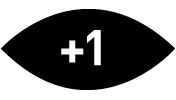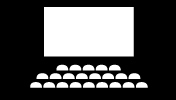

Toy Story, the flagship series of Walt Disney Pictures collaboration with Pixar Animation Studios, is unique among cinematic trilogies in that the third film is by far the best of the bunch—[NOTE: An ill-advised, yet surprisingly satisfying, fourth instalment was released in 2019, making the series now a quadrilogy.] The original Toy Story (1995) is a charming picture that, in the grand Disney tradition, bestows human emotions, behaviors, and personalities on distinctly non-human entities. In this case, classic childhood toys are anthropomorphized rather than animals, plants, furniture, household cleaning implements, or early ‘80s computer programs. Like many of the Pixar features that followed, Toy Story is a state-of-the-art paean to something nostalgically old-fashioned. It’s a kids’ movie, but the playthings that are enchantingly brought to life are mostly from earlier decades that adult viewers will collectively hold dear. Aside from this romantic quality and the terrific ensemble voice cast, Toy Story is a simple tale of friendship and teamwork that is most notable for being the first entirely computer-generated feature film.
Though hardly as fresh or inventive as the original, the sequel, Toy Story 2 (1999), was even more successful and acclaimed. Both pictures are amusing, light entertainments that I found initially engaging, but my interest diminished the more time I spent with the characters, who didn’t feel substantial enough to sustain multiple adventures (or multiple viewings). Therefore, nothing about these two movies could have ever led me to believe that Toy Story 3 would not only be the best entry of this series, but that it would top my list as the best picture of the year and one of the most moving films I’ve seen in a long time.
Toy Story 3 is a far deeper, funnier, and more imaginatively structured picture than its predecessors. It also achieves the most elusive thing in series entertainment—a fully satisfying concluding chapter that lives up to, enriches, and elevates the movies that came before. I can count on one hand the number of long-running series—be they films, television shows, or novels—in which the final instalment is the best. (It is most often the weakest and least satisfying.)
This third picture begins with a Raiders of the Lost Ark style mini-adventure where our toy protagonists Woody (Tom Hanks), Buzz Lightyear (Tim Allen), and Jessie (Joan Cusack) must save a trainload of orphan toys from an evil piggy bank. Right away we can see how much the CGI technology has advanced in the fifteen years since the first film. Remarkably, however, the Pixar artists have figured out myriad ways to keep the visual aesthetic, character design, and animation style in line with the previous films. As it turns out, this western train sequence is a memory from the bygone days when Andy, the kid all these toys belong to, paid far more attention to them. When the story proper begins, we learn that Andy (now voiced by John Morris) has reached college age, and many of his toys have been lost, given away, or otherwise forgotten about. When Andy’s mother (Laurie Metcalf) wants to clear his childhood room out, the few remaining toy soldiers (led by R. Lee Ermey’s Sarge) initiate their exit strategy. They know that when this stage of life is reached, toys get thrown away or tossed in the attic, never to be heard from again.
Woody refuses to give up on the child he’s been devoted to for the past eighteen years and assures the others that Andy will never give up on them. Buzz and Jessie, as well as the insecure Rex (Wallace Shawn), Hamm (John Ratzenberger), and the Potato Heads (Don Rickles and Estelle Harris), want to believe Woody. However, through an inventive series of mishaps, all of Andy’s remaining toys, along with his sister’s cast-off Barbie doll (Jodi Benson), end up getting donated to a children’s day-care center called Sunnyside.
Once there, the gang meets a new crop of toys. These include, among others, Whoopi Goldberg as a rubber octopus named Stretch, Timothy Dalton as a stuffed hedgehog named Mr. Pricklepants, Kristen Schaal as a blue Triceratops named Trixie, Jeff Garlin as a stuffed unicorn named Buttercup, Bonnie Hunt as a googly-eyed rag doll named Dolly, and a fantastic Michael Keaton as a metrosexual Ken doll who is totally unaware that he’s meant to be an accessory to Barbie. All these toys are watched over by a big, pink, strawberry-scented teddy bear with a Southern drawl named Lots-O'-Huggin' Bear (the great Ned Beatty). Many of these toys have had far less happy lives than Andy’s toys, and most have rejected the kind of sentimentality and loyalty to a specific child that Woody still clings to.
It doesn’t take long before our heroes realize that Sunnyside is not a happy place, and Toy Story 3 makes its first of several exciting genre switches, becoming a kind of prison-break picture. The jokes, the energy, and the inventive screenwriting kick into high gear at this point. Miraculously, the emotional connection gets elevated as well. The genre parody here is not the simple, surface-level, reference-heavy gags of Nick Park and Peter Lord’s Chicken Run or an episode of The Simpsons . We become as invested in this great escape as we do in the actual The Great Escape—or Brute Force, Cool Hand Luke, Escape from Alcatraz, or any of the other classic jailbreak movies.
But the film’s major strengths appear in its third act, when Toy Story 3 transforms yet again, this time into a film about mortality. This last transition happens quickly, as by now we are deeply engaged in the dramatic action and are simply not prepared for this kids’ movie to suddenly transform into a profound confrontation with death. We don’t have time to ask ourselves when exactly this CGI cartoon about stuffed animals and plastic action figures became a meditation on grief, loss, and the impermanence of existence. Was the Toy Story series always about these weighty concepts? Well, yes, it kind of was. After all, the characters are mostly vintage artifacts living in a world of technological gadgets and interactive games. That was the central conceit of the first movie, with its conflict between the old cowboy pull-string doll Woody and the modern electronic action figure Buzz Lightyear. And what did this latest film’s first act center on but the anthropomorphized toy heroes facing up to the fact that they may no longer be wanted or relevant to the child they have built their lives around? Still, at first glance, all these themes seem like simple metaphors for parents who aren’t ready to let go of their late-teenage kids—a moving subject, but hardly something we haven’t seen before in countless features.
The thrilling climactic moment of Toy Story 3 manages to create the near-death-experience effect of life flashing before our eyes, as the events of all three movies start to rerun in our heads, now imbued with new and profound significance. Even the relatively cheesy Randy Newman theme song from the first picture suddenly begins to take on lofty significance. As viewers, we want to contemplate all of the reevaluations that comes flooding in, but the film has built to such an exciting and ingenious climax that we only have a few seconds to think about any of it. When these digital cartoon characters look each other in the eyes for what might be the last time, it has the power to stop the heart or bring tears to the eyes with as much sincerity and earned emotion as the endings of Midnight Cowboy, Terms of Endearment, Thelma and Louise, or the opening sequence of the previous year’s Pixar hit Up. Perhaps the aptest comparison for the stealth and unexpected emotional power of this climax is Star Trek II: The Wrath of Kahn—another genre adventure movie sequel that surprisingly manages to explore themes of mortality, friendship, grief, and loss to a greater degree than most stand-alone dramas. Series have the ability to tap into deep emotions because long-running characters have often been a part of an audience’s life for years or even decades. When we face losing people we grew up with, it taps into more primal feelings than losing folks we just met.
Also like The Wrath of Kahn, there is a key element that makes this genre story work where nearly every blockbuster film of the past decade has come up short: the villain. The 1990s and 2000s represent a twenty-year span where Hollywood (and many international and independent filmmakers) forgot that protagonists are only as interesting as their antagonists. From Hans Gruber (Alan Rickman’s delectable villain in 1989’s Die Hard) to Hans Landa (the brutal yet charmingly polite Nazi embodied by Christoph Waltz in 2009's Inglourious Basterds) there has been a dearth of evildoers we love to hate at the movies. That just one year after Basterds, Disney would give us another all-time great villain in Toy Story 3, gives me hope for the future of Hollywood cinema.
In addition to the fantastic villain (and the less known about him in advance, the better—especially for younger viewers), the characters we meet in Toy Story 3 are more clever and original than in the previous pictures. The filmmakers take real risks with certain characters for both humorous and dramatic purposes. And many of the jokes and comical set pieces that at first seem to exist simply to make us laugh, set-up key narrative beats that pay off later on.
Pixar is a highly collaborative studio, with a large yet intimate production team and “brain trust” of directors who weigh in on every decision at every stage of every film. I have no doubt that this multi-headed creative team is the reason this movie is full of so many clever gags, hilarious character traits, and inventive plot twists that all manage to feel of a piece and serve the narrative perfectly. Still, tremendous credit for the exceptional quality of this picture must be given to its screenwriter Michael Arndt (the Oscar-winning writer of Little Miss Sunshine). The level of depth on display here is far beyond anything Pixar has achieved previously. Movies like WALL-E, Ratatouille, and Up each have their moments of brilliance, but none can hold a candle to the unprecedented cumulative power of this exceptional film.
Twitter Capsule:






